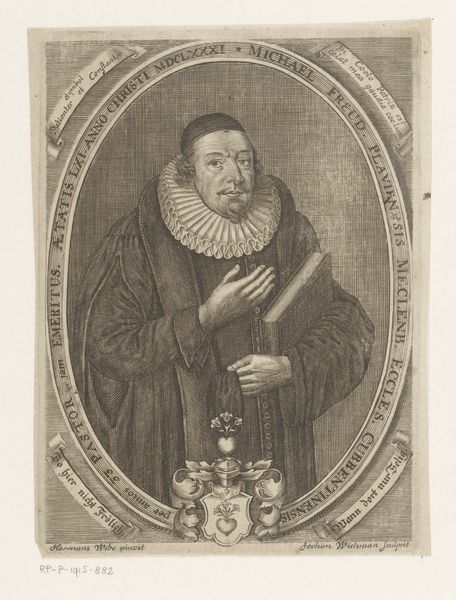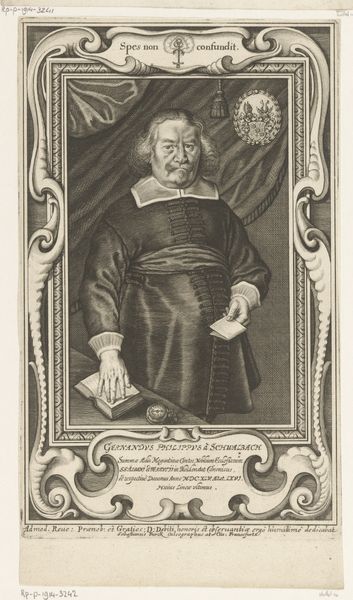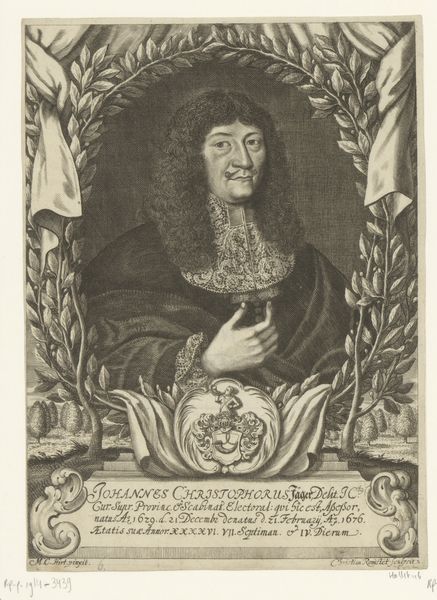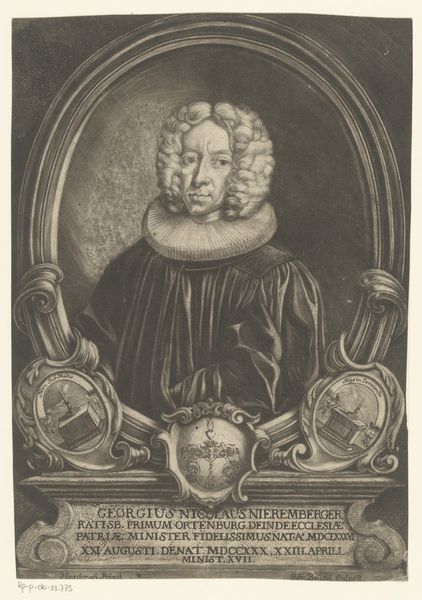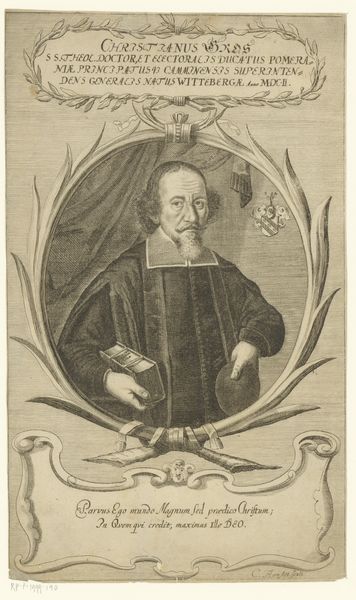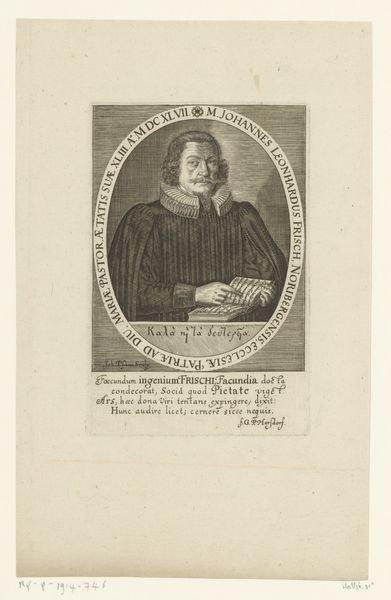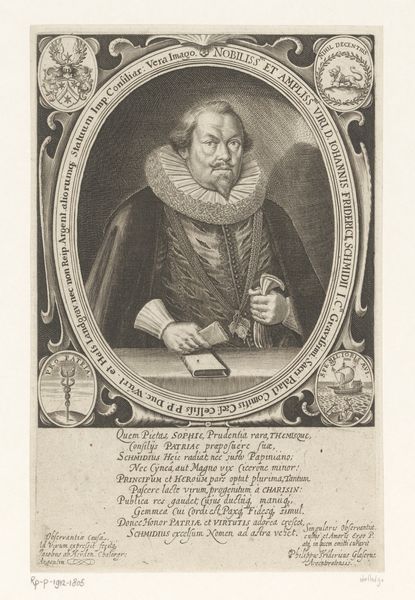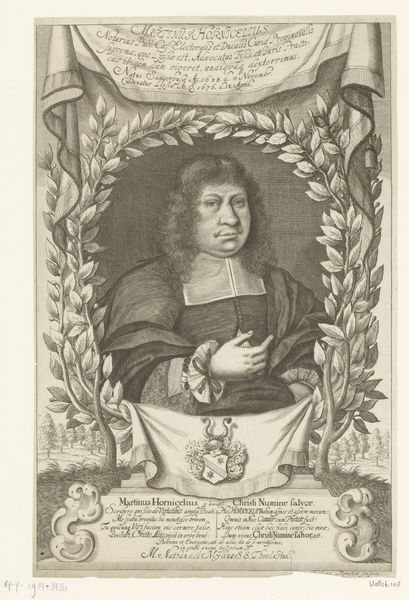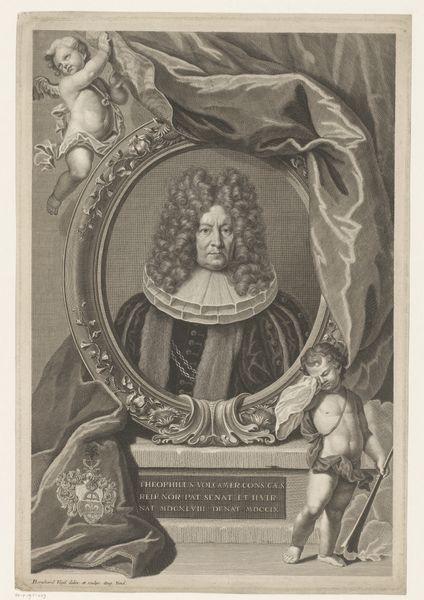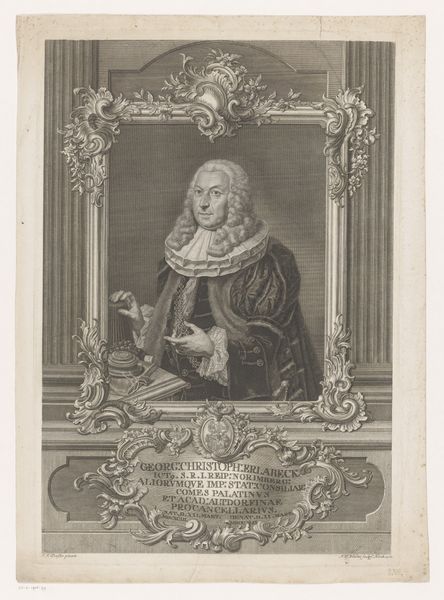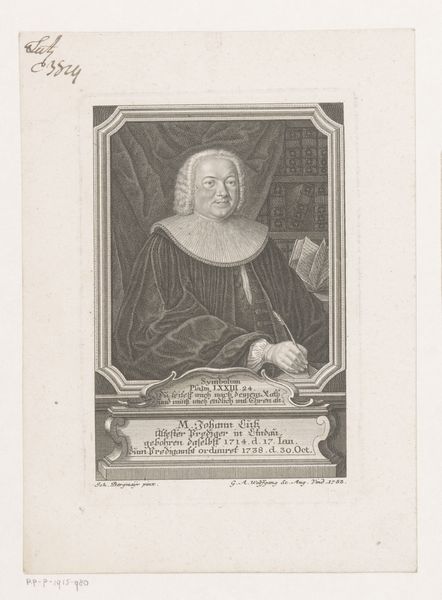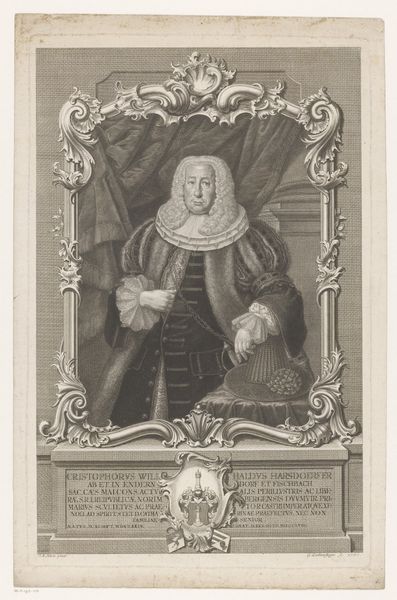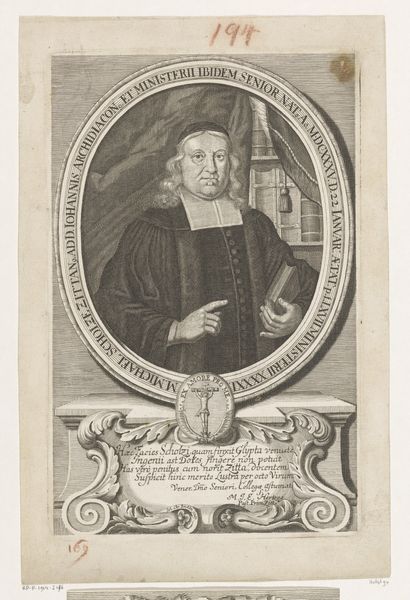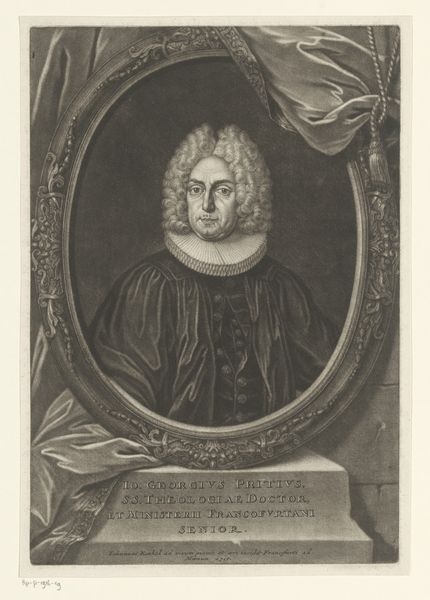
drawing, print, paper, ink, pen, engraving
#
portrait
#
drawing
#
medieval
#
baroque
# print
#
book
#
pencil sketch
#
old engraving style
#
paper
#
ink
#
pen work
#
pen
#
engraving
Dimensions: height 159 mm, width 90 mm
Copyright: Rijks Museum: Open Domain
Editor: Here we have a print called "Portret van August Pfeiffer," created sometime between 1665 and 1721, likely an engraving on paper. I find it very formal, almost austere, yet the laurel wreath adds a touch of… theatricality, perhaps? What do you see in this piece, especially considering the context in which it was made? Curator: The theatricality you perceive is key. Let's consider this within the framework of 17th-century power structures. Portraits like these weren't simply about capturing a likeness; they were about constructing an image of authority, reinforcing social hierarchies. August Pfeiffer, holding a book, is being presented as a man of learning and influence, but who was he really and for whom was this portrait intended? Editor: I see, it’s less about individual personality and more about projecting a specific kind of persona that fits societal expectations. Curator: Exactly! Think about the symbolism – the wreath, the coat of arms, the book – all signifiers of status and intellect carefully chosen to communicate Pfeiffer's position. Even the act of commissioning the portrait itself was a power move, wasn't it? Who had access to portraiture? Who was excluded? Editor: That's a good point. It makes me think about who gets to be remembered and how that memory is shaped and controlled through art. I hadn’t considered how the portrait itself functions as a kind of historical document, both revealing and concealing aspects of the subject and the society in which he lived. Curator: Precisely! We can use it as a lens to explore questions of access, representation, and the construction of historical narratives. How does this resonate with contemporary issues of representation in art today? Editor: I guess, seeing art through this lens pushes us to critically examine how historical narratives are built. Thanks!
Comments
No comments
Be the first to comment and join the conversation on the ultimate creative platform.
